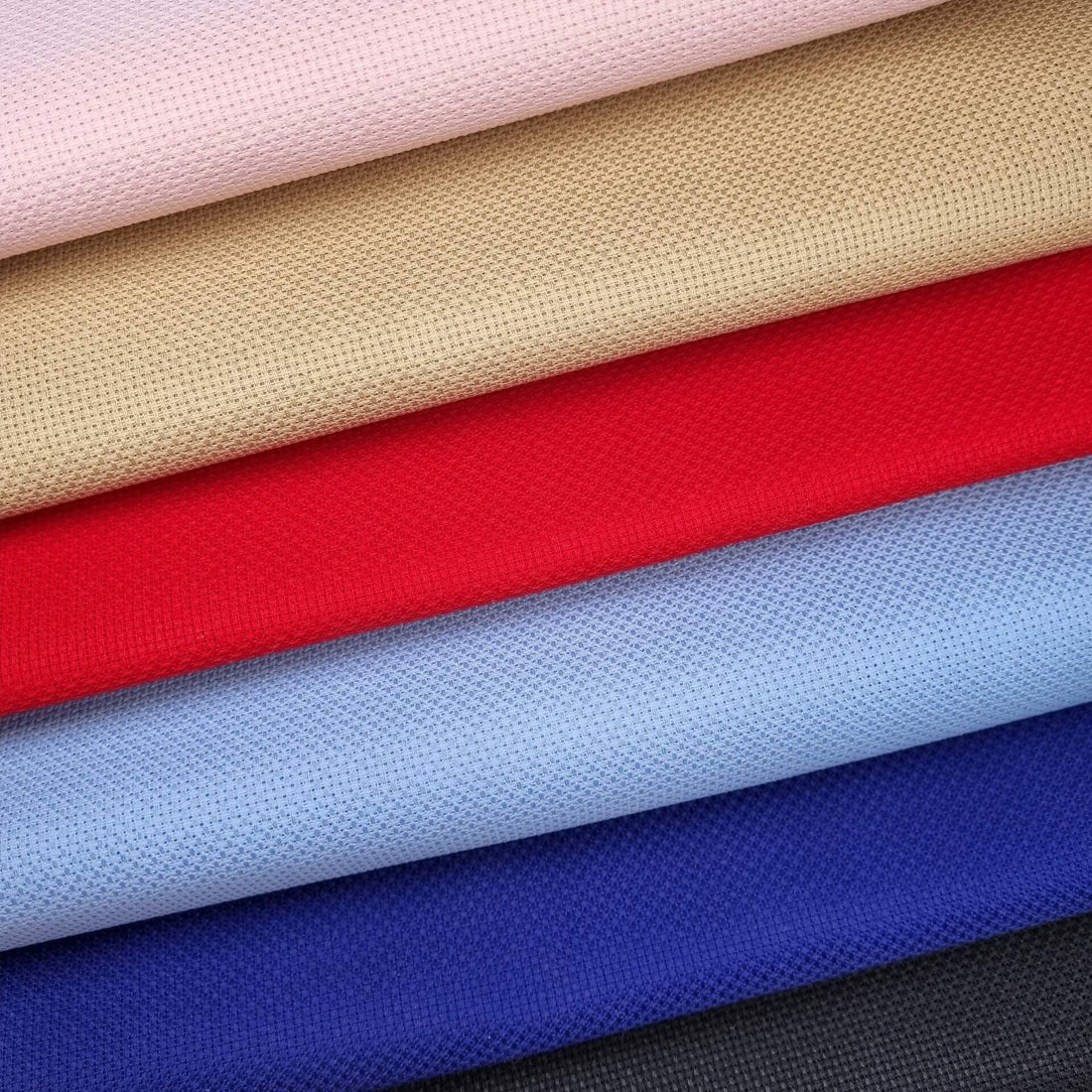When you’ve been cross stitching your whole life like I have, you naturally come to find a fabric that you prefer using for cross stitching. Everyone has different requirements, and there are fabrics available that are better suited to certain cross stitch projects or levels of ability too.
Read on to find out my favourite cross stitching fabric, and to perhaps discover a new fabric you might like to try for your next cross stitch project.
1. The classic cross stitch fabric: aida

Ok, I’m spilling the beans straight away - my favourite fabric for cross stitching is aida. My favourite is 14 count aida, which is the standard size that you get in all Meloca Designs cross stitch kits, and most other cross stitch kits too.
Aida is usually made from 100% cotton, and has an open weave, so the gaps between threads create little holes, making it perfect for cross stitching. The obvious holes and sturdiness of the fabric make it really great for beginners.
“14 count” refers to the number of holes for stitches per inch, so if you were cross stitching a design that was 120x120 stitches, your finished design would be approximately 8.5 inches. If you used 18 count aida with the same design, the design would come out smaller.
So, if you have a large cross stitch project, it might be worth thinking about using a higher count aida (like 18 count) so that the finished design ends up smaller, and easier to display.
2. Linen for a natural yet refined look to your cross stitch
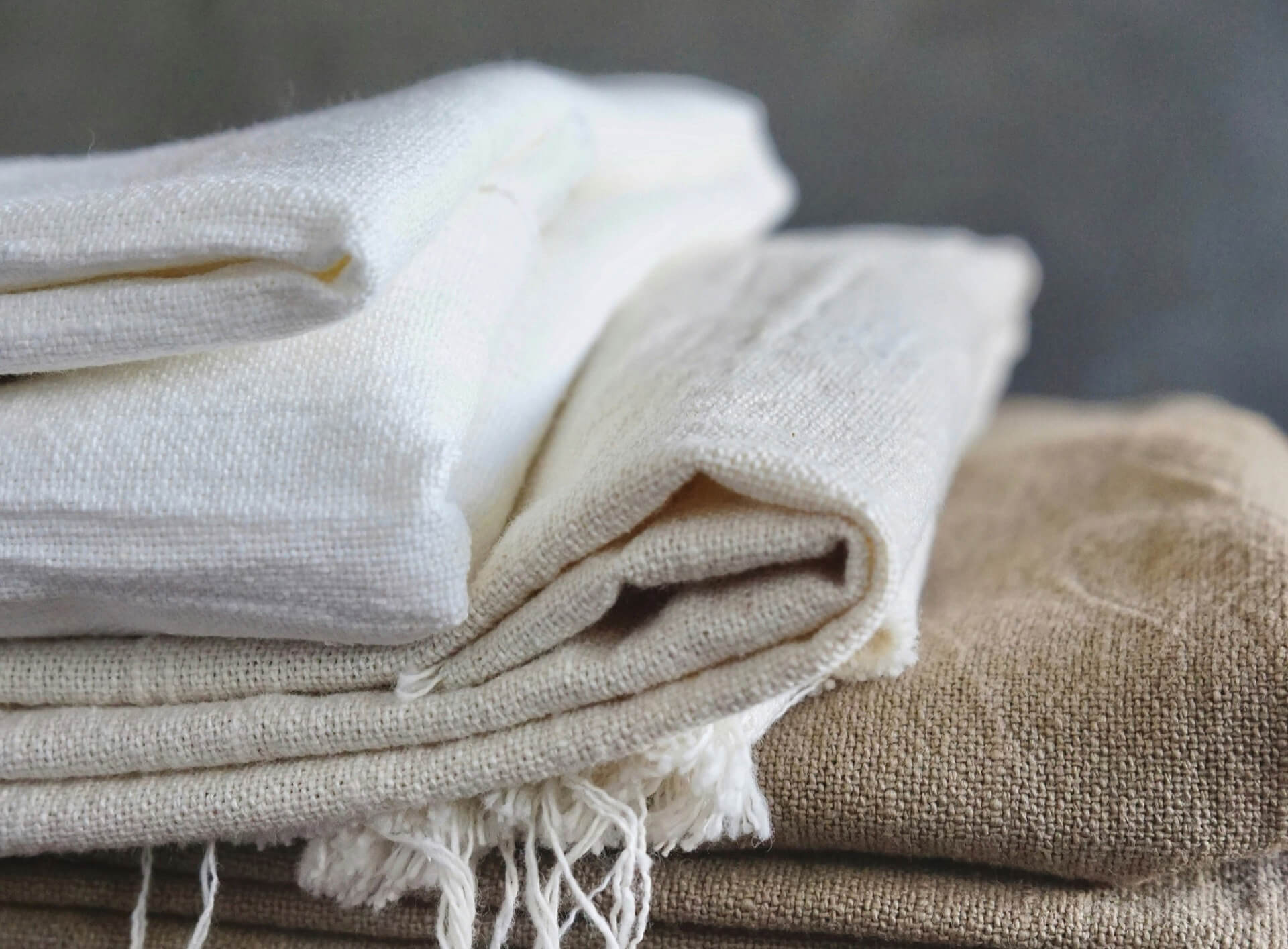
Linen is spun from the stalks of flax plants, and has a loose weave, which makes it a good fabric for cross stitching, but does mean it can be prone to fraying.
Washing the fabric before you start will ensure that it won’t shrink if you wash it after you’ve finished your cross stitch, and you can “fix” the edges with a sewing machine, masking tape, or something like Fray Check which is a colourless liquid that stops fabric from fraying.
Linen is available in a variety of thread counts, and usually you would cross stitch over 2 of the linen threads, so the equivalent of 14 count aida would be 28 count linen.
As it’s a natural fibre it can have irregularities, like the spacing between threads being less even, and “slubs” (bobbles or thicker parts of the thread), meaning it’s probably better for more experienced cross stitchers.
It’s also a much softer fabric than aida, so it can be tricky to get the tension right - too loose and it’s hard to cross stitch onto, too tight and it can warp the weave.
Some cross stitchers think it gives a more refined, elegant look and feel to your finished cross stitch piece, and that it’s great for cross stitch designs that have empty space, as the fabric is so attractive on its own.
It doesn’t work for every cross stitch design, and I personally think that aida works better for the colourful cross stitch patterns I make for Meloca Designs.
3. Evenweave for a consistently spaced cross stitch fabric
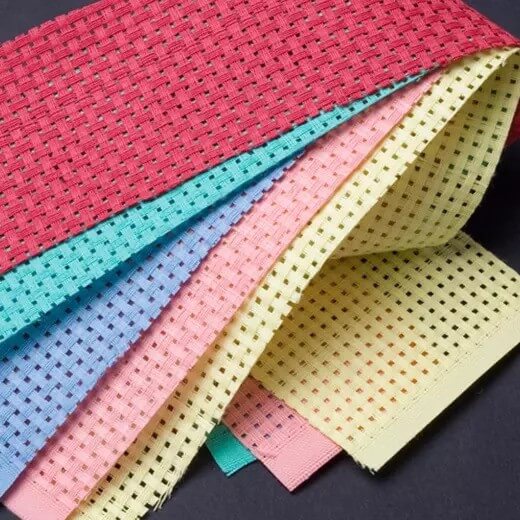
Evenweave is usually made from a mix of cotton and rayon fibres, which ensures that both the thickness and spacing are really consistent - hence the name. That also makes it easy to cross stitch onto.
It has a higher thread count than aida, and is commonly found in 25, 28, and 32 counts. Similarly to linen, you usually cross stitch over two spaces, so to create the right sized design on Evenweave, you should double the aida count.
Evenweave would probably be better for more advanced stitchers, simply because it might be confusing to someone that's just started cross stitching having to stitch over multiple holes instead of one.
Also, like linen, Evenweave is less stiff than aida, and frays a lot more easily, so make sure to fix those edges before you start cross stitching.
4. Customise your clothing with waste or soluble canvas
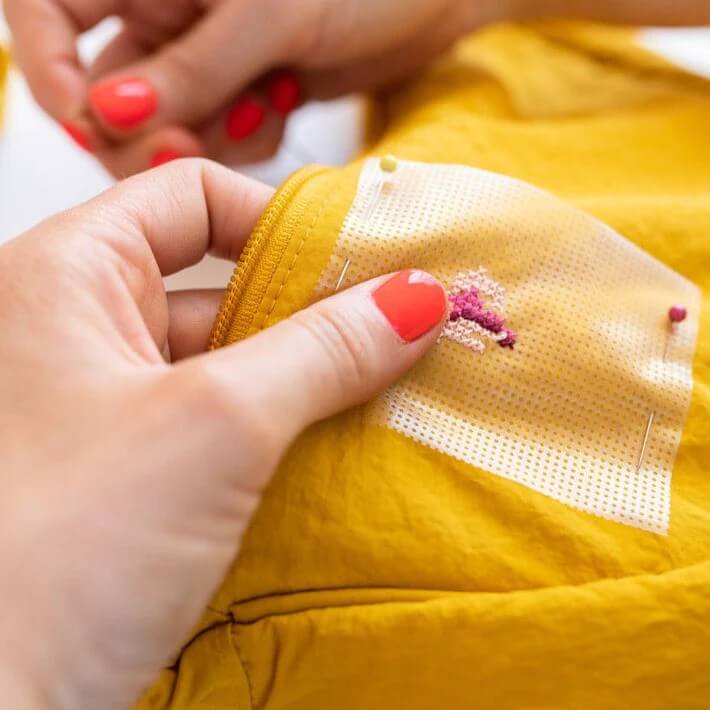
If you’re wanting to cross stitch onto a fabric that doesn’t have an open or obvious weave - like a cotton T-shirt or tote bag, or even canvas shoes - you can use a soluble cross stitch canvas (pictured).
This is a canvas made of PVA, with clearly defined holes similar to aida fabric. Once you have finished cross stitching your design, you simply place it into water, and the canvas dissolves.
Alternatively, you can use waste canvas to do this, which might be better if you’re customising your clothing with a large cross stitch design.
Waste canvas is a heavily starched, open-weave fabric. After you’ve finished cross stitching, you wet the fibres to relax them and pull the threads out, leaving your cross stitch design intact.
5. Creative cross stitch on knitted fabric
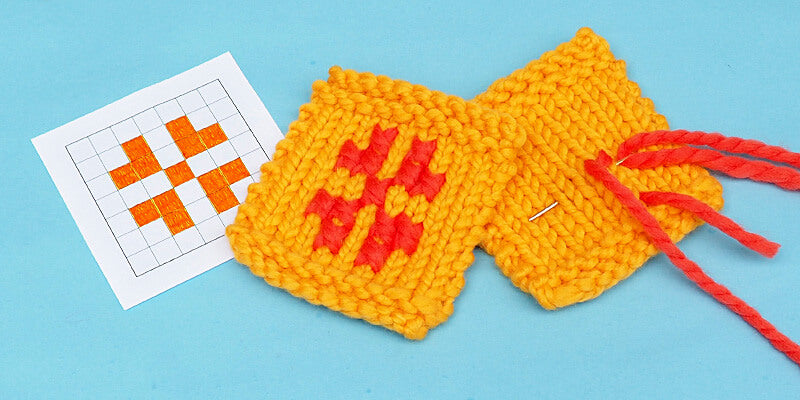
Cross stitch actually works quite well on knitted fabric, because the stitches and rows of knitting help distinguish where your cross stitches should go.
It’s best to go for a simple design or pattern, and due to the thickness of most knitting yarn, it would basically have a much lower “count” (which is the number of holes or spaces per inch).
I found a couple of really helpful videos on YouTube - this video by 10rowsaday (pictured above) and this video by CreaCrafts show really clearly how to cross stitch onto knitting.
6. Make a huge cross stitch canvas

The brilliant Monica from Crafty Nest was inspired by modern, oversized cross stitch art that she’d seen online, and decided to make her own (pictured).
She didn’t want visible holes where there were no stitches, so used a stretched canvas like you’d find in an art shop, which would normally be used for painting. Each of her cross stitches is one inch square, so you can get an idea of just how big this beautiful cross stitch is.
It sounded like it was a bit of an upper body workout, but it was worth it for the stunning results. You can see more of her process and download the pattern from her blog post, DIY giant cross stitch on a canvas.
7. Cross stitch outside the box


Why stop at fabrics? You can cross stitch on pretty much anything if it has holes in it - I’ve seen people stitch on benches or walls using a drill and giant threads.
I saw a girl on TikTok during lockdown cross stitch on a bench in her local park. The bench had holes in it, so she just took it upon herself to get some knitting wool and go for it. The example pictured above is from Miss Cross Stitch.
Or how about mesh fencing, or chicken wire? Have you got a pegboard in your craft room that is crying out to be cross stitched upon? Or maybe even an office chair?
Once you start looking for things to cross stitch, you’ll probably see them everywhere - just make sure to get permission if you’re doing it in a public place.
Have I forgotten any brilliant cross stitching fabrics? Make sure to join the Meloca Designs Cross Stitch Facebook Group to share your favourite cross stitch fabric, or to chat about all the creative places you’ve seen other people cross stitching.
Happy stitching!

